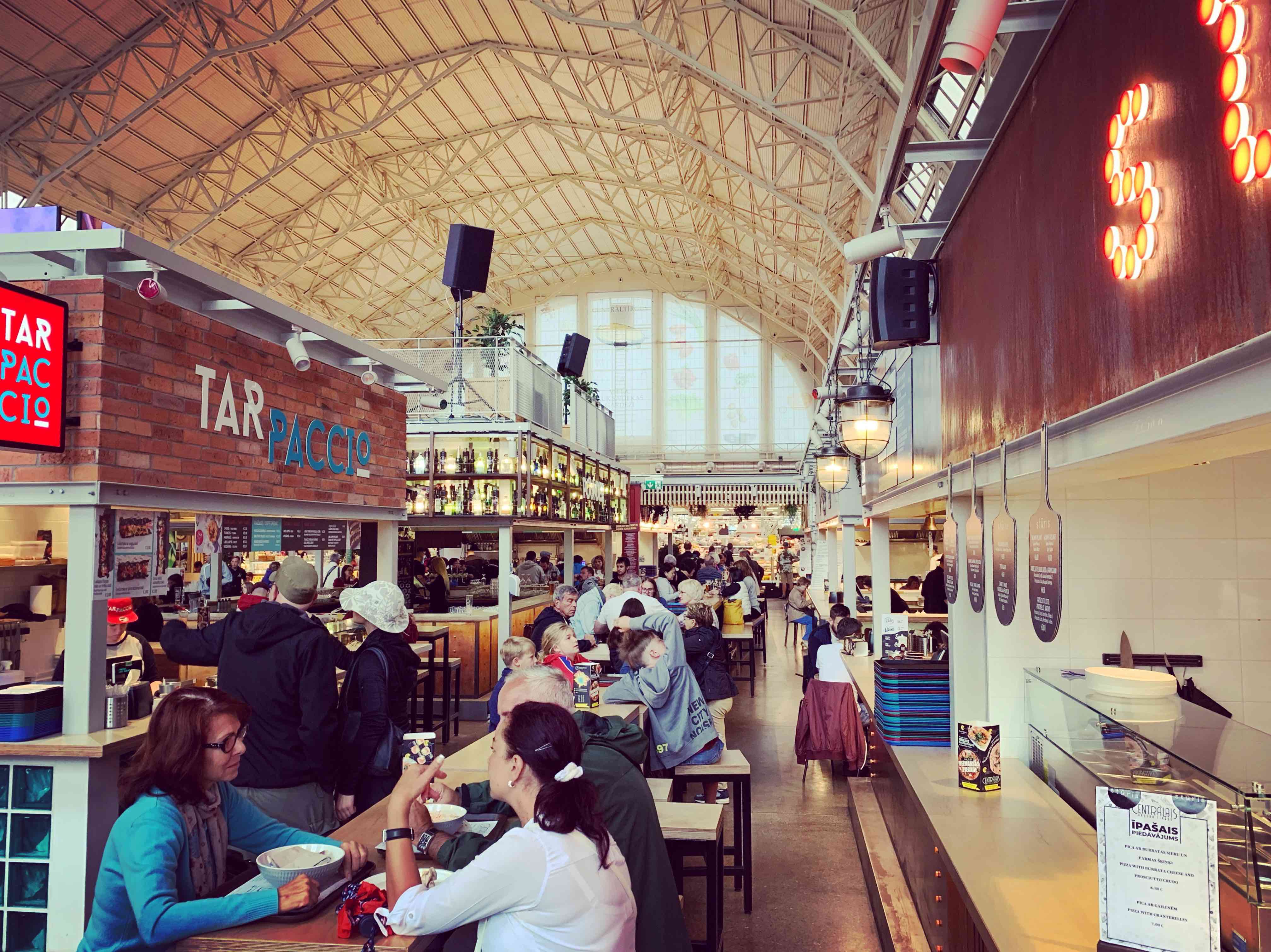Riga Central Market in Latvia’s beautiful capital city somehow feels both familiar and completely unique.
Walking from the railway station (or riding by electric scooter, which are popular in the city) you first encounter a traditional and somewhat down at heel open air market.
On our visit we found traders hawking everything from amber jewellery and ornate Russian dolls to knock-off Nikes and Vladimir Putin t-shirts.
But the real treasure lies within five enormous pavilions originally constructed as German Zeppelin airship hangars.
These immense Neoclassical and Art Deco inspired buildings were completed in 1930 and play host to some 3,000 traders over 778,000 square feet.
It is the largest market in Europe and was granted UNESCO World Heritage status in 1998.
There is such an abundance of produce that the foodie I was with thought she was hallucinating.
Here you will find, as one travel writer puts it, “smoked fish thrust into a bucket like dried flowers; huge wheels of the sweetish, dark rye bread called laci; traditional dairy products like cannabis butter and the caraway cheese that’s eaten on Midsummer Eve.”
But what I think makes Riga Central Market truly special is the way traditional stallholders have been paired with street food vendors.
Visitors in this new section of the market socialise on shared benches and enjoy everything from handmade ravioli and Korean steamed bao buns to ramen and caviar – just as you would find in Manchester’s Northern Quarter.
There is nothing pretentious or overly precious about the space – it is functional and unfussy, with people of all ages and backgrounds there to do their weekly shop, and to catch up with friends, all in one place.
It shows the power of numbers – when independents of all stripes come together with a compelling offering customers will follow in droves.
This combination of market stalls with a food hall works so perfectly I do not know why the idea is not more widely adopted.
It seems certain that this concept would offer a compelling alternative to the supermarket and restaurant chains that still dominate in the UK.












